When designing a new build or renovating an older property, we work hard to deliberately link the indoors to the outside. We may encourage this indoor/outdoor flow via processional cues that are intentionally placed within a home’s architecture. In some instances, a series of cased openings or archways may resolve in French doors calling guests to the outside. In others, a central spine may be inserted from the front door through the structure to the back of the house, subconsciously drawing visitors to the exterior.
When designing an outdoor program, we’re often asked what materials are durable enough to withstand a varied climate of extremes while also imbuing a home with timeless character. A look through our portfolio surely highlights our favorites; below, we call them out by name.
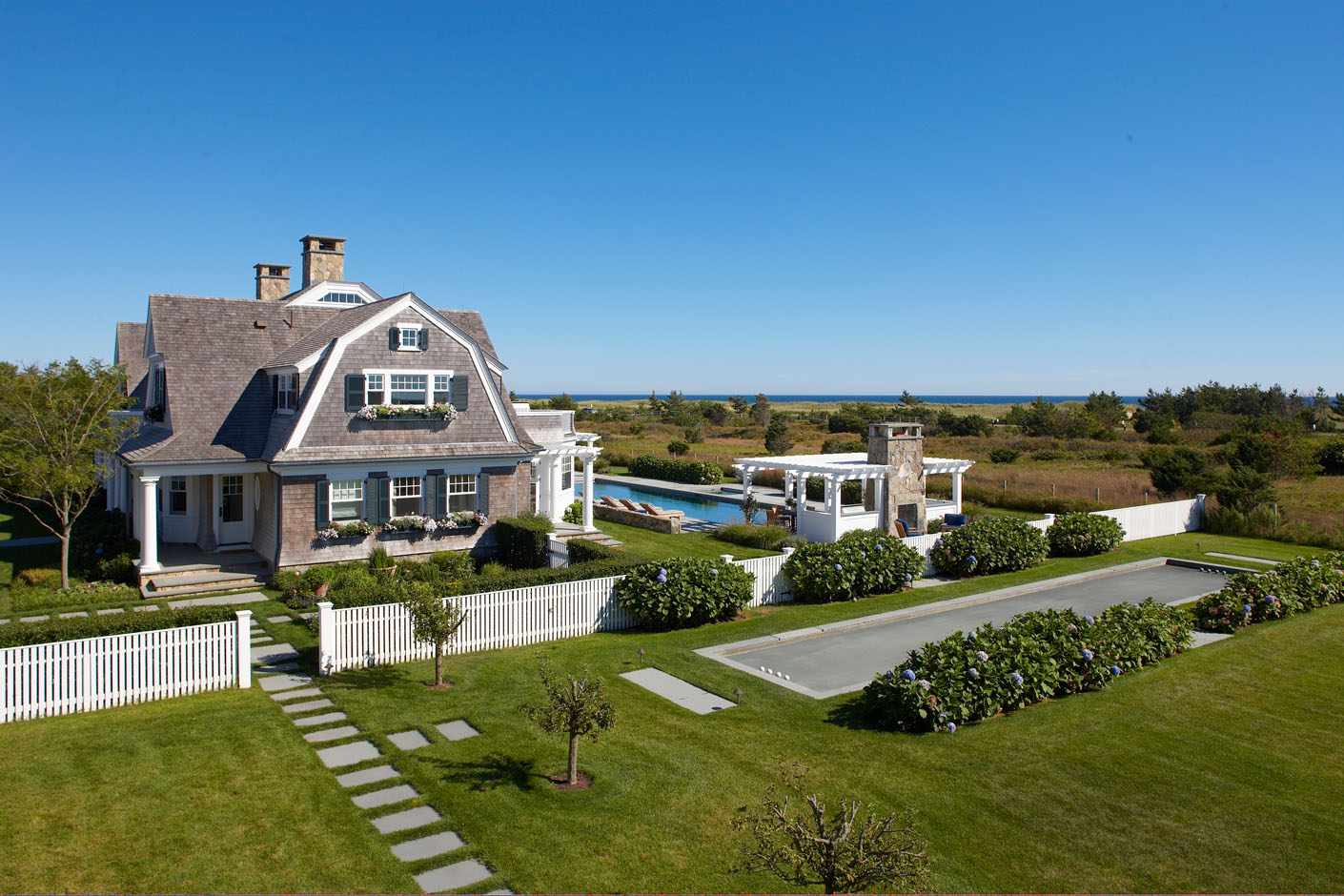
Bluestone and granite
Prized for its quality, natural beauty, and ability to withstand even the most extreme temperature swings, bluestone is a top choice for exterior hardscape. Available in thermal varieties, which are cut and torched to provide a non-slip surface, or with natural cleft, which offers more top texture and naturally occurring irregularities, the coloration of bluestone ranges from consistent light blue to dark blue/grey, at times with tones of brown, tan, white, and even eggplant in the mix. Programs involving stone walls may resolve in bluestone-capped posts and may include bluestone lined wall seats. Bluestone plays well with nearly all of our architecture, and as a result, we use it with frequency. Some homeowners wonder about walking on hot bluestone that has heated in the sun; in our experience, darker colored bluestone can become hot, while lighter colors will warm but not scald even the littlest bare feet. Learn more about bluestone here.
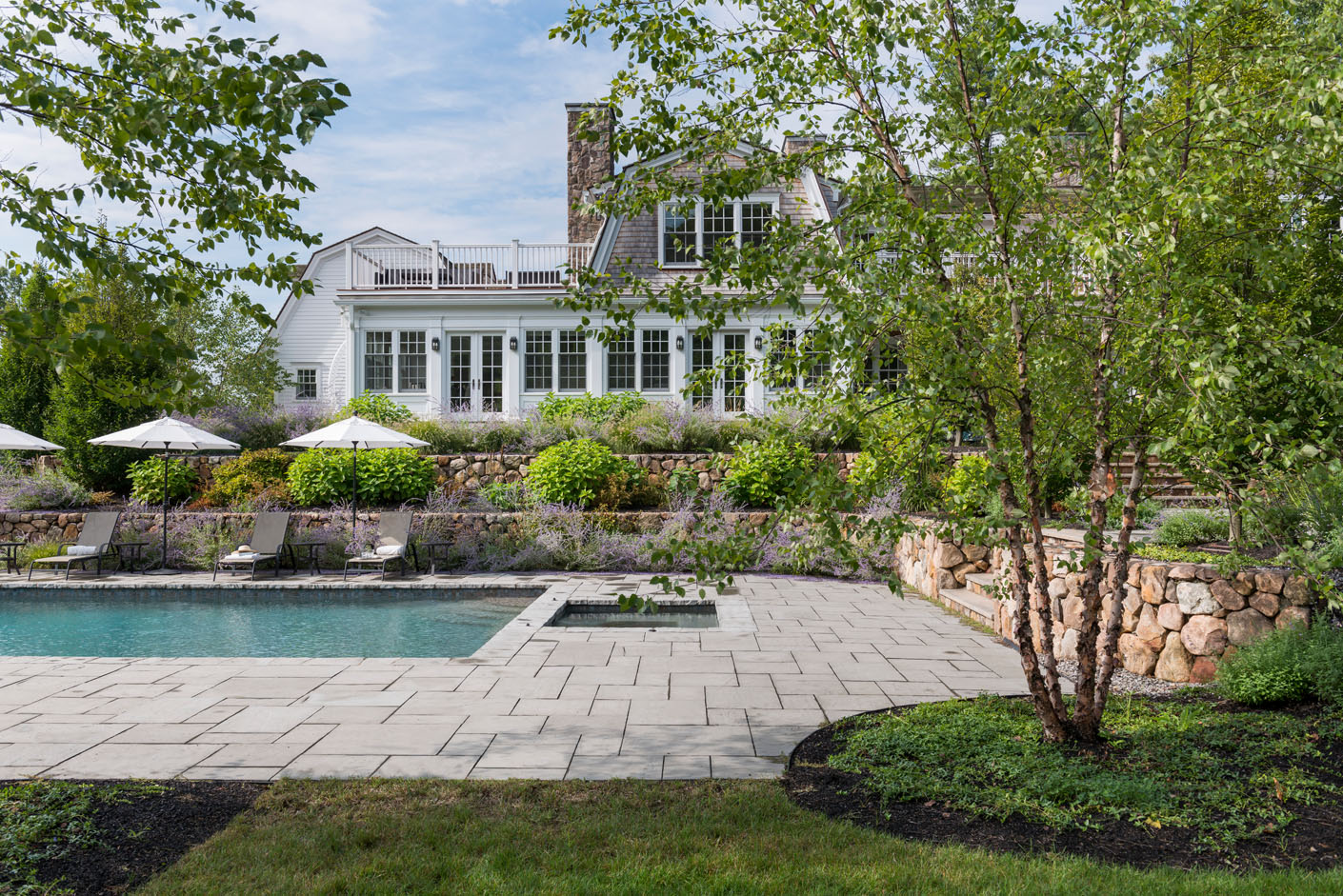
Similar in appeal to bluestone but with the important distinction that it stays cool underfoot, granite is known for its extreme strength, hardiness, and durability. Granite is virtually indestructible and neither scratches nor chips easily, making it a natural choice for patios, pool surrounds, exterior dining areas, and even steps within a greater landscape program. Often available with a thermal/flamed finish that provides a pleasing non-slip pebbled texture, granite is a suitable alternative to bluestone with comparable character.
Fieldstone and flagstone
When we consider stone walls and elements, including fireplaces and fire pits, we look to fieldstone and flagstone as two ideal materials. Both are naturally occurring, with the distinction that flagstone is found beneath the ground and quarried, and fieldstone is found above ground, often on mountainsides. Available as veneer or as solid stone for custom applications, fieldstone and flagstone offer texture, character, and durability. Depending on a home’s unique presentation, we may even consider fieldstone or flagstone for an interior fireplace or accent wall.
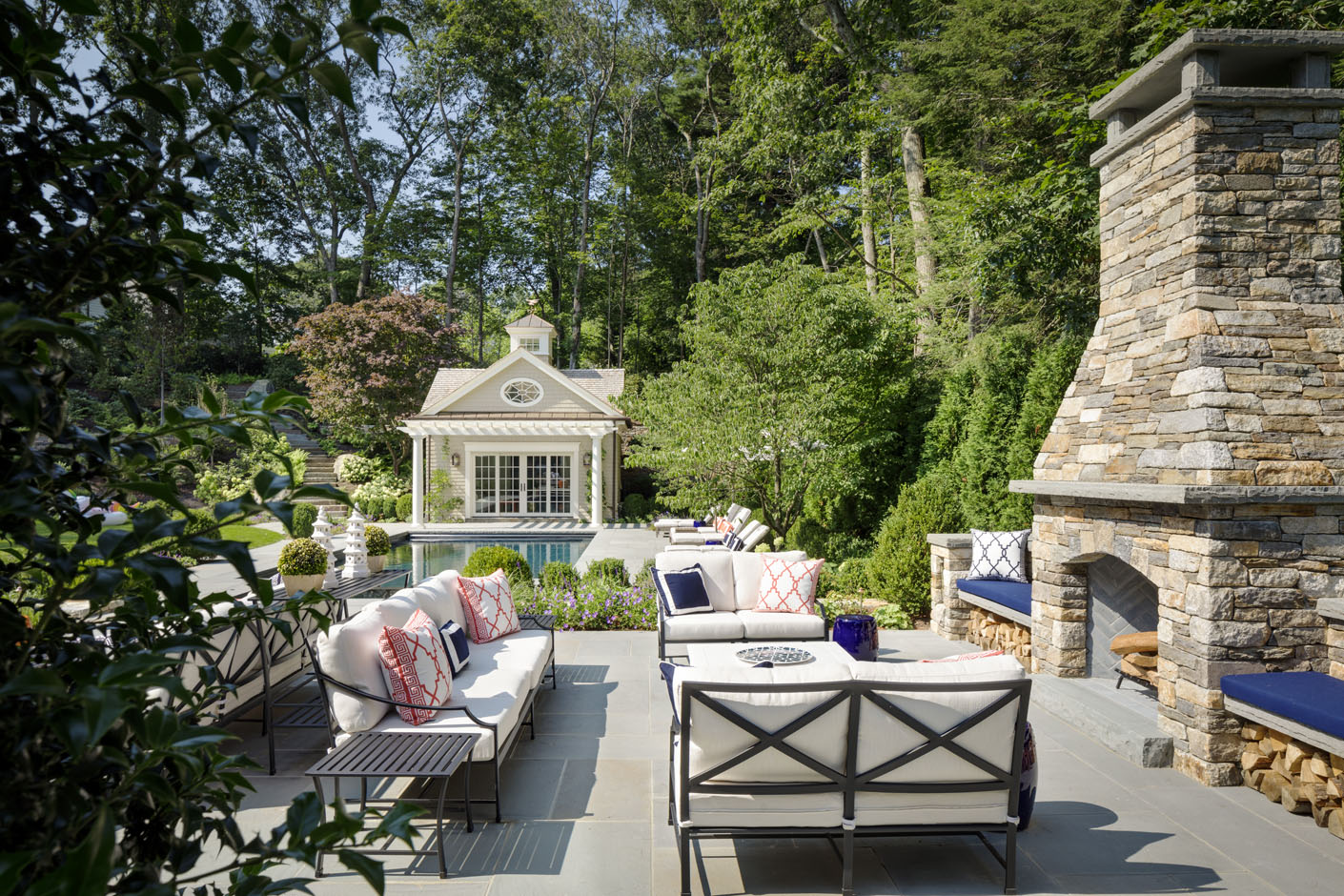
Cobblestone
Some of the earliest cobblestone in the US dates back to the 17th century when rounded forms were laid in graphic patterns to pave city streets. Eventually, the rounded cobble gave way to Belgian Block, which is often used today for decorative and functional exterior elements. At times specified for an entire driveway to backdate a new build, or more often used as an accent ribbon at the end of an asphalt or shell drive, cobblestone adds a point of historic reference and theme to a property. Cobblestone can also be used to provide edging for walks or patios of brick or shell, which we explore below.
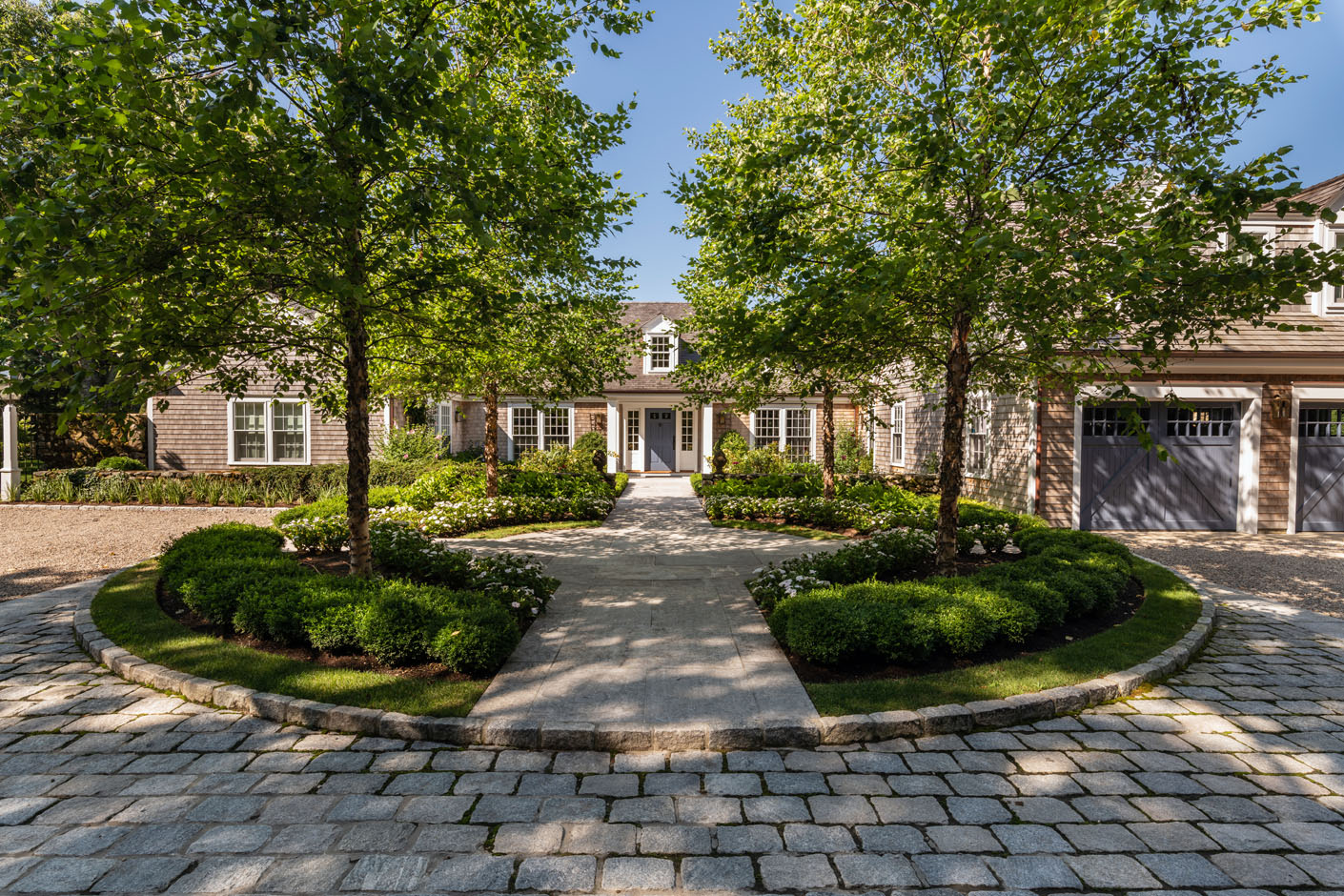
Brick
The first bricks were made in our region in Salem, Massachusetts in the early 1600s. As a result, within New England colonial vernacular, brick is often seen. Period-appropriate and offering iconic coloration, we think about brick for a variety of exterior elements, including walkways, foundation coverage, and, where architecturally pertinent, exterior chimneys or hearths. Brick can also be successfully used in ribbon driveways; contrasting with cobblestone, grass, or shell, brick in this application can offer both visual interest and thematically appropriate function. In renovations or additions to homes in which brick is pre-existing, we take great care to color match new brick for a seamless transition between old and new forms.
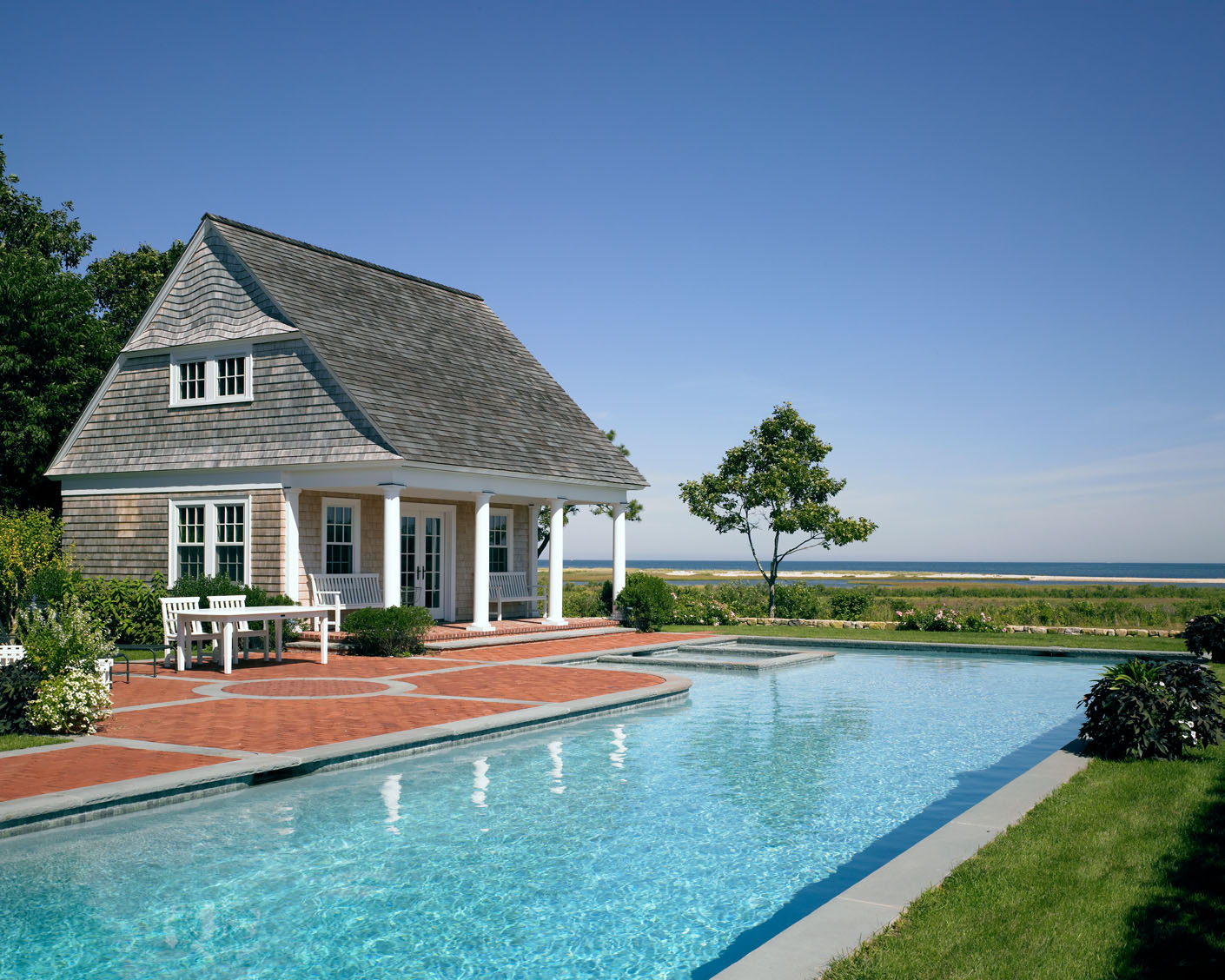
Crushed shell and peastone
While many may think of crushed shell as a significant coastal material, crushed oyster shell actually paved some of the earliest streets, predating cobblestone even in bustling cities! Today, paired with timeless architecture, especially regionally on Cape Cod, Martha’s Vineyard, or Nantucket, crushed shell is an aesthetically pleasing and thematically appropriate material which we may specify for driveways or garden walks. A cousin to crushed shell in appearance, but peastone may be used in similar applications.
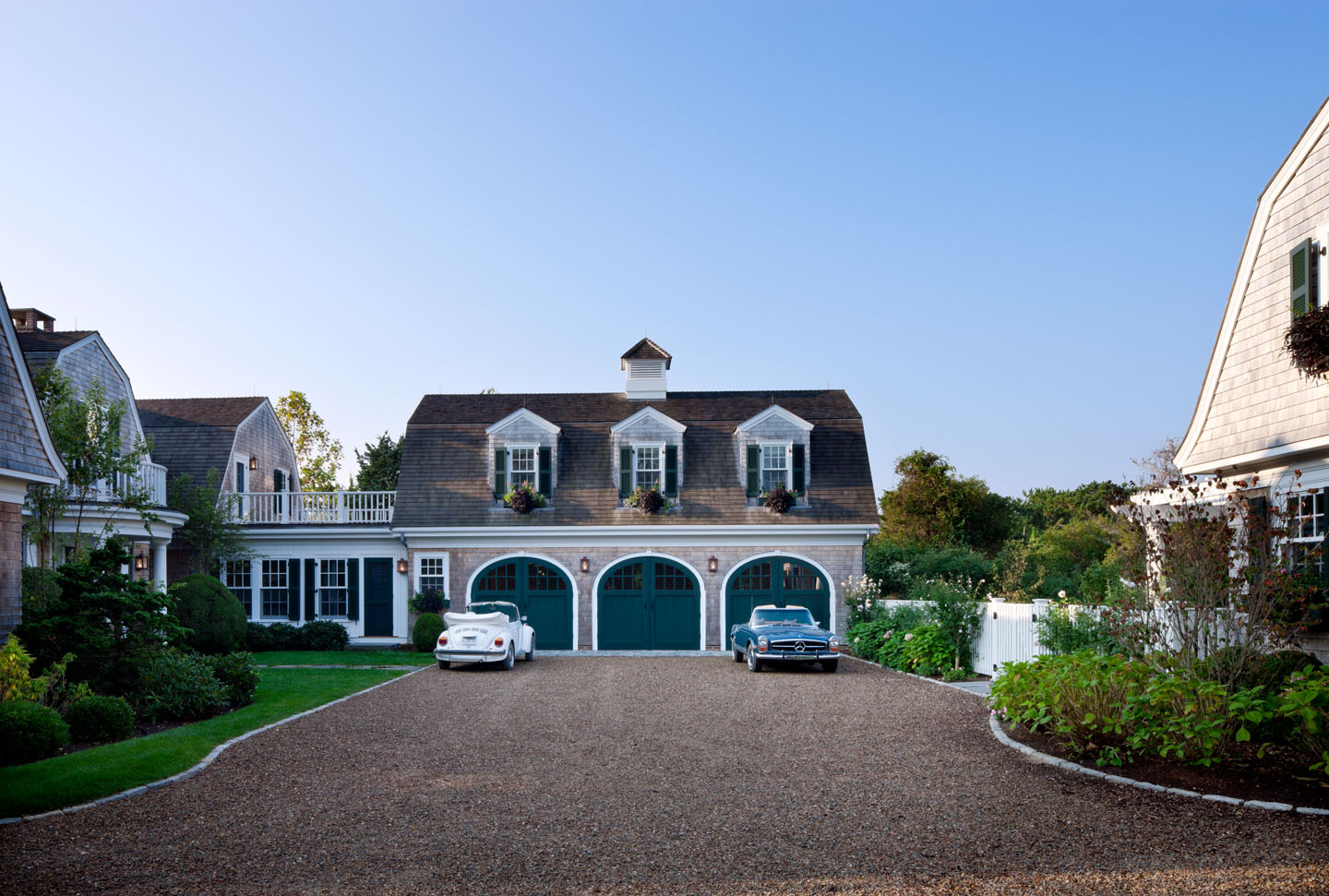
The privet hedge
The hedge is an enduring element of landscape architecture, dating back hundreds of years. Extraordinary hedge examples can be seen in Florence, Italy’s Boboli Gardens, which dates to the mid-1500s, and the manicured gardens of Versailles, which were created and renovated 100 years later. In America, the first privet hedges were introduced in the 1700s to shield properties from wind and delineate property lines. Today, a mature privet hedge makes for an iconic softscape which is an ideal complement to our architecture. Whether comprised of true privet, or boxwood, arborvitae, hydrangea, or a combination of species, a green backdrop has enduring natural appeal that will never go out of style.
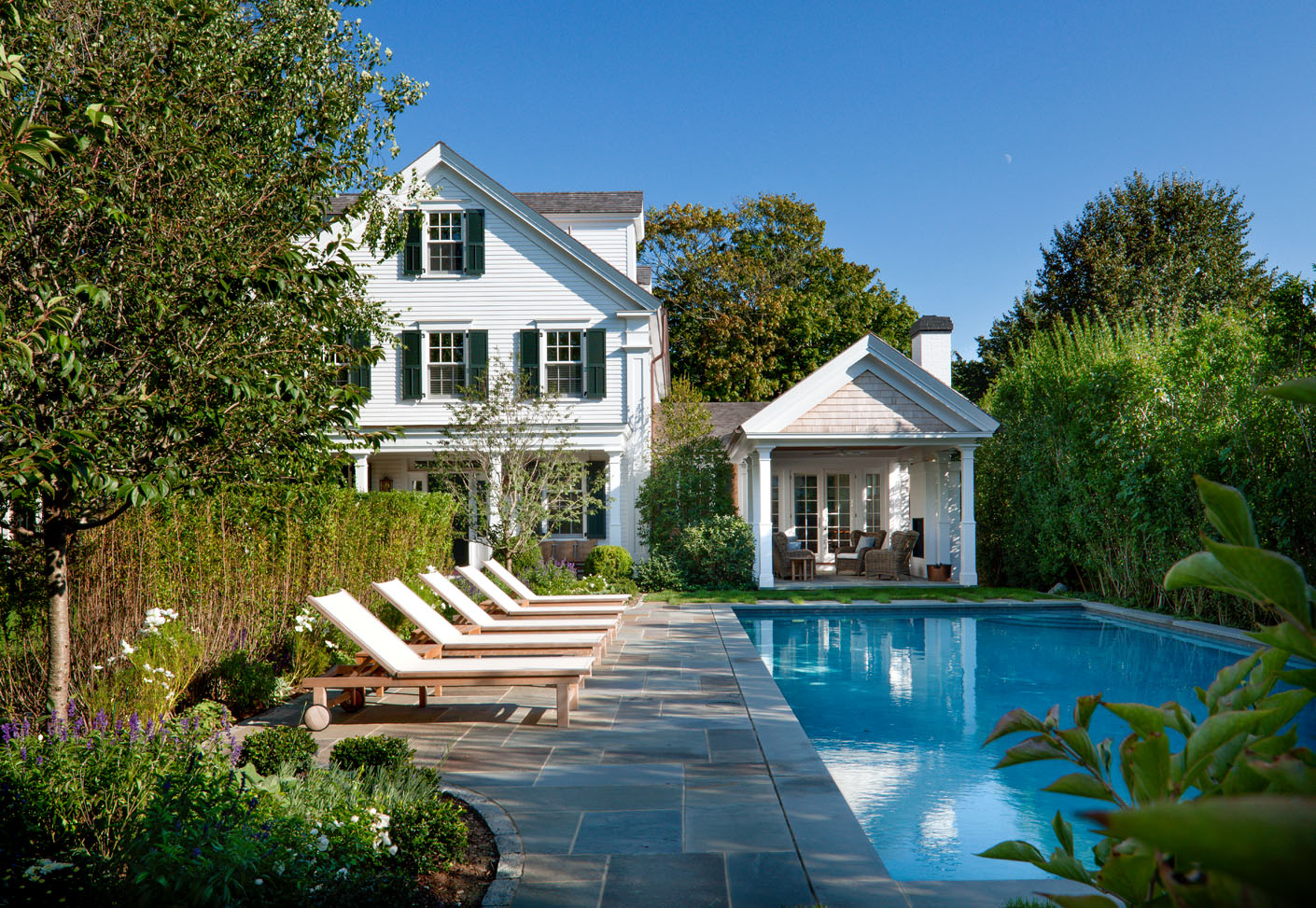
If this exploration of materials has you rethinking your own outdoor living spaces, contact us to learn how we might approach the program. In the interim, we invite you to find meaningful inspiration in our portfolio.